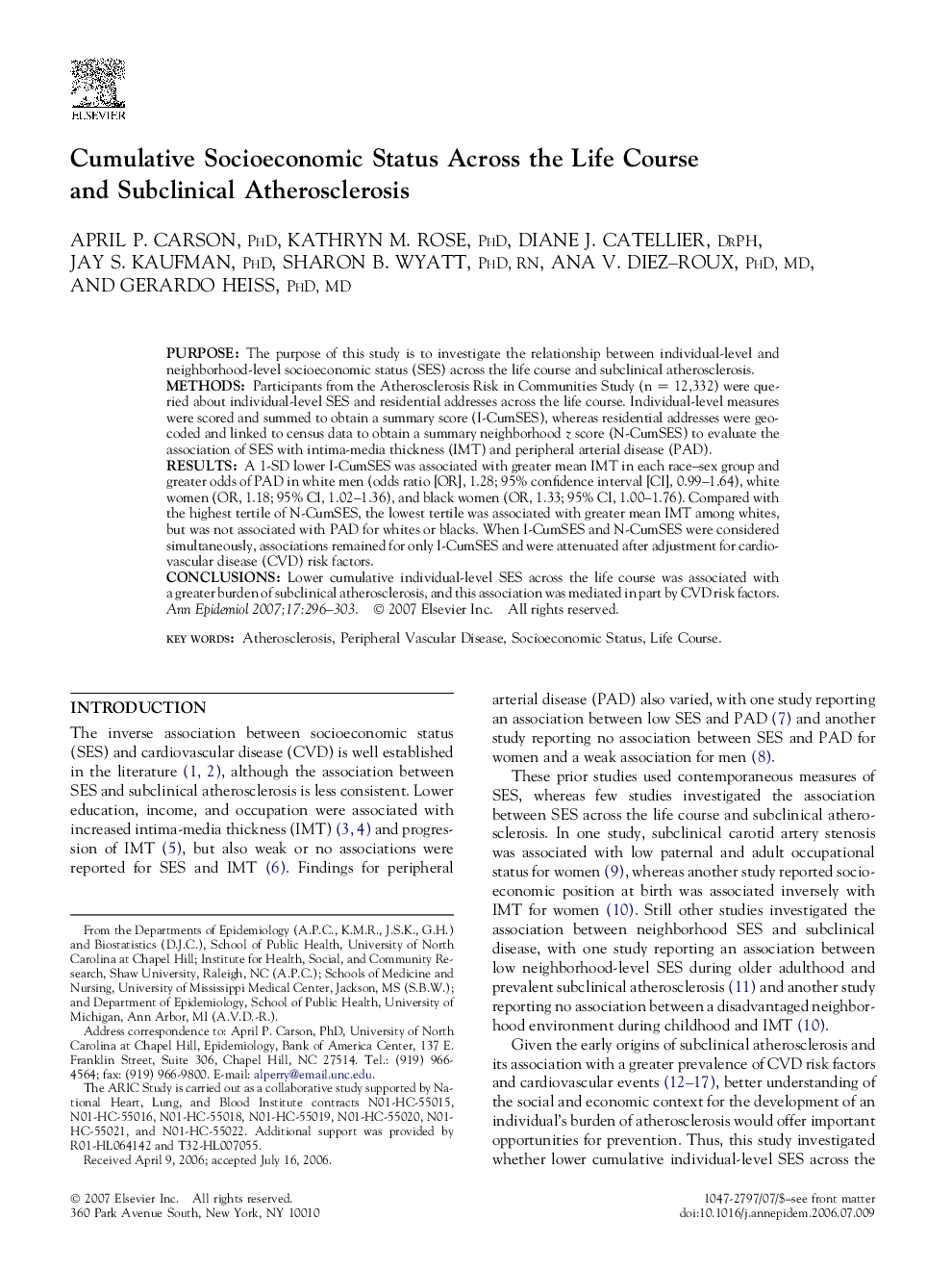| Article ID | Journal | Published Year | Pages | File Type |
|---|---|---|---|---|
| 3445414 | Annals of Epidemiology | 2007 | 8 Pages |
PurposeThe purpose of this study is to investigate the relationship between individual-level and neighborhood-level socioeconomic status (SES) across the life course and subclinical atherosclerosis.MethodsParticipants from the Atherosclerosis Risk in Communities Study (n = 12,332) were queried about individual-level SES and residential addresses across the life course. Individual-level measures were scored and summed to obtain a summary score (I-CumSES), whereas residential addresses were geocoded and linked to census data to obtain a summary neighborhood z score (N-CumSES) to evaluate the association of SES with intima-media thickness (IMT) and peripheral arterial disease (PAD).ResultsA 1-SD lower I-CumSES was associated with greater mean IMT in each race–sex group and greater odds of PAD in white men (odds ratio [OR], 1.28; 95% confidence interval [CI], 0.99–1.64), white women (OR, 1.18; 95% CI, 1.02–1.36), and black women (OR, 1.33; 95% CI, 1.00–1.76). Compared with the highest tertile of N-CumSES, the lowest tertile was associated with greater mean IMT among whites, but was not associated with PAD for whites or blacks. When I-CumSES and N-CumSES were considered simultaneously, associations remained for only I-CumSES and were attenuated after adjustment for cardiovascular disease (CVD) risk factors.ConclusionsLower cumulative individual-level SES across the life course was associated with a greater burden of subclinical atherosclerosis, and this association was mediated in part by CVD risk factors.
